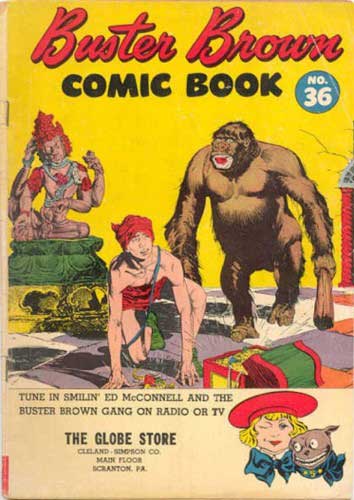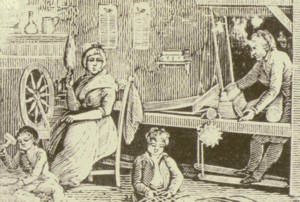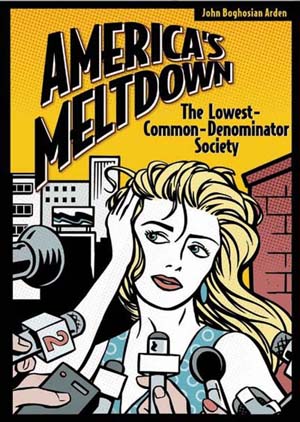| Understanding Capitalism Part IV: Capitalism, Culture and Society
Understanding
Capitalism Part IV: Capitalism, Culture and Society
By
 - February 4, 2005
- February 4, 2005

The impact of
capitalism on culture and society has been a matter of great debate ever
since its emergence in Europe as an economic system in the late 1700s.
The impact of capitalism on culture and society is an issue that really
stands apart from all of the other economic concerns.
In many ways, the
cultural impacts of capitalism overshadow all other considerations of
the system. It is capitalism’s impact on society that has shaped
Western Civilization for the past 200 years.
The cultural impacts of
capitalism are extremely varied, and this has left room for its
proponents to champion its merits as well as its detractors to criticize
its ill effects.
Discussing the impact
of capitalism on culture can be difficult. In what way is
“capitalism” responsible for a given aspect of culture, indeed can
any aspect of culture be said to be a product of “capitalism”?
Yes, certain aspects of
culture and society can be said to be a product of “capitalism”, but
defining how and why something is said to be a product of capitalism is
very important.
Some of the key
concepts relating to an analysis of the effects of capitalism on culture
are profit motive, commodity, human desire, and the market economy. The
capitalist system is based on private ownership and consolidation of the
means of production, where the production of commodities is guided by
profit motive to satisfy human desires.
What capitalism does do
is it encourages people, in general, to engage in activity that is
deemed valuable by other people. This is what many people see as
capitalism’s most positive attribute, and indeed this is an extremely
important factor in the ways in which the capitalist system has been
successful. The Culture of WorkAt a certain level
competition and profit motive, both of which are encouraged by the
capitalist market system, provide a stimulus to action. This
encouragement to act is a major factor in the diversity of products that
are produced by capitalist societies.

In the way that the
capitalist system works, however, reward is not always proportional to
contribution. In many ways the capitalist system is a “winner take
all” type system, and this “winner take all” system actually
encourages stronger competition.
A contest can be
used as an example.
Reward in a capitalist system is similar to a gold panning competition
where the winner takes home a large portion of all the gold panned by
everyone during the competition.
For example, let’s
say that a gold panning competition is held in Alaska with 500
contestants, where the First Place winner will receive 50% of all of the
gold collected during the competition, Second Place will take home 25%,
and Third Place will get 15%. The remaining contestants will keep
whatever is left over of the gold that they collected after the needed
amount is taken to pay the winners’ prizes.
This competition will
encourage people to participate and it will encourage people to work
hard to try to collect as much gold as possible. It will also, of
course, encourage cheating and other such acts, as is to be expected in
any competition.
At the end of the
competition everyone brings in their gold to have it weighed. Let’s
say the person with the most gold brought in 20 grams of gold, and the
person who brought in the least gold brought in 2 grams.
What we can see here is
that the person ranked #1 collected 10 times more gold than the person
ranked #500.
Assuming that the
average amount brought in was 10 grams of gold, then 50% of the gold
brought in would be 2,500 grams of gold.
This is what the first
place winner would receive, 2,500 grams of gold. Now, that person only
collected 20 grams themselves, but they get a portion of everything that
everyone else collected as well. Of course the majority of people,
though they would still have some gold after the competition, would have
less than they actually collected.
Such a competition
would encourage people to pan for gold - it would, in effect,
“stimulate the economy”. It would encourage productivity.
The “dream” of
“making it big” would encourage people to hone their gold panning
skills, it would encourage people to develop new and better ways to pan
for gold, it would, in effect, promote progress.
The fact is, however,
that this is a winner take all type system. The person at the top is
getting a disproportionate amount of the gold that was collected by
everyone. The winner gets more than what he or she collects, and it is
the fact that there is the potential to get so much more than you as an
individual collect that drives the competition forward.
This,
“competition”, of course, may be perfectly "fair", in that
anyone can win it. There is no discrimination in who is allowed to
participate and there are no regulations that hold anyone back in
particular. Indeed, it is also the case in this competition that the person
who collects the most is also rewarded the most, so in that sense it is
fair. However, of course, the amount that the winner gets is dependant upon
how much everyone else collects as well, because the winner is getting more
than just what they collect as an individual, they are getting a share of
what everyone collected, and the majority of participants take home less
than they collect. Likewise, working the hardest does not guarantee that you
will win the competition, there are elements of chance involved, but working
hard does increase your likelihood of winning.
Nevertheless, the
competition does promote progress and it does result in more gold being
collected and it does provide a “dream” for its hundreds of
participants.
It is by a similar
fashion that modern capitalism promotes progress and makes fortunes. It
is also by a similar fashion that capitalism encourages a sort of
“work ethic”, although not exactly, because in the real world it is
as though no one knows exactly how much gold they or anyone else has
collected, and at the end of the day everyone believes that the amount
of gold they are taking home is exactly the amount of gold they have
collected, and thus the first place winner “believes” that he or she
has collected 2,500 ounces of gold and those at the bottom don’t
realize that any gold has been taken from their collection.
So, when the first
place winner takes home 2,500 ounces and the last place person takes
home half and ounce, everyone believes that the person in first place
actually “worked” five thousand times harder than the person in last
place, despite the fact that they really only collected ten times more
gold.
This perception
of vast discrepancy of effort contributes to even greater drive and
social pressure to work harder, and thus the “culture of work” is
established. The Culture of DesireIn addition to
promoting a culture of work, capitalism also promotes a culture of
desire.
Economics is defined in
college textbooks across America today as, “the study of human
choice in using scarce resources to satisfy unlimited wants.”
The marketplace is
effectively limited by how much people want. This leads to a natural
tendency in a market system for the sellers in the system to work to
increase human desire, leading to the creation of more and stronger
wants, and thus expanding the market.
While marketing is the
most direct expression of this phenomenon, it really pervades the entire
culture and is reflected in general entertainment, personal attitudes,
religious values, the education system, and government policy.
The development of the
culture of desire created by market capitalism has actually been one of
the biggest, if not the biggest, change in American society since the
birth of the country.
Many early Americans
believed in austere lifestyles, the Puritans being the most prominent
example of this. The Puritans didn’t allow dance, wore mostly black,
and practiced a culture of self-denial. The Puritans, of course, were
actually a relatively small group, especially by the time of the
founding of the country.

Even the average
American, however, was relatively reserved in early times. Of course, in
early times the country was not capitalistic and people were much more
self-sufficient. Most individuals and communities provided for their own
needs and wants directly, independent of the market system. America was
a predominately family farming country, after all, until the mid 19th
century.

The Buster Brown
brand, developed in 1904, became established through one of the
most pervasive marketing campaigns in history
Advertising and the
consumer culture had become significant by the Roaring 20s of the early
20th century as the American capitalist economy really began
to thrive. This later increased with the widespread adoption of radio, but it
wasn’t really until the 1950s, and the widespread usage of television
and movies, however, that the consumer culture revolution really began.
Not only did technology facilitate the advancement of consumer culture,
but the Keynesian economic policies adopted by America after World War
II viewed consumerism as the drive-train of the economy.
While many examples can
be given, cigarette smoking is a classic example of a specific case of
the promotion of a product via not just advertising, but its portrayal
in media and society in general as well.
Interestingly, the
tobacco industry is the oldest major industry in America. The tobacco
industry was also highly involved in slavery, as slaves were heavily
used on tobacco plantations. Arguably the tobacco industry is the
epitome of the American establishment, and represents some of the oldest
fortunes that exist in America, as well as some of America’s oldest
corporations.

Slaves harvesting
tobacco
Nothing really
represents “The Man” in America more than tobacco, yet, this
industry, through marketing, Hollywood, and general social presentation,
was able to convince millions of Americans, not only that “smoking was
cool”, but also that it was a form of rebellion “against the
establishment”.
Ironically, many
“social rebels”, those troubled youth who “hated the system” and
wanted to “fight against oppression”, bought into one of the biggest
elements of the very system that they opposed. Nothing represents power,
corruption, deception, the legacy of slavery, social manipulation, and
the good ole boy system more than Big Tobacco, and yet for generations
“rebels” by the millions have been lighting up, and they continue to
do so, feeding the establishment that they love to hate.

That is just one
example, however, of how an irrational desire for a specific product has
been promoted by industry, but it is the overall culture of consumerism
that is of bigger concern.
All media and social
practices that promote desire in general are embraced by capitalist
culture, because the promotion of desire itself, even when not directly
related to a specific product, promotes a culture of consumerism, and
much of advertising is not about promoting a specific product, but
indeed about promoting the overall culture of desire.
In the natural world,
emotional desires motivate animals to engage in the activities needed
for survival and procreation. Human desires developed over millions of
years of evolution in environments of typically scarce resources and
opportunities, where strong motivations were needed to prompt action in
the face of risk.
With the advance of
human civilization, human beings have been able to alter the natural
environment and make resources that were difficult to obtain in the
natural world much easier to obtain. This has happened rapidly over the
past 10,000 years or so, and the ability of people to make these
resources more easily obtainable has continued to increased over time.
The same basic trigger mechanisms exist in the human brain today as did
millions of years ago when early hominids were struggling for basic
survival.
This is, for example,
why people today have such a high affinity for fatty foods.
Historically, fats were a scarce resource that was difficult for humans
to obtain. Fats are extremely high in energy, and thus very valuable to
humans “in the wild”. For this reason, humans evolved a high
affinity for fatty foods. The desire for fatty foods drove humans to
pursue resources that were highly beneficial to survival in a natural
context, and to prefer those resources over other possible alternatives
when there was a decision to be made.
It’s important to
remember that economics is the study of human choice in relation to
limited resources.
In American society
today, however, fatty foods are no longer scarce resources that are
difficult for humans to obtain, but our brain is still motivated to seek
them out as if they are scarce resources that are difficult to obtain,
and thus, in terms of decision making, people are generally compelled by
their desires to prefer fatty foods over other foods, even when the
choice of the fatty food is not rational. This has resulted in our
capitalist market economy focusing on the production and marketing of
fatty foods because they are easy to sell because humans have a natural
instinctive desire to prefer fatty foods. The culture created by
marketing feeds on these desires and works to increase them.

Traditionally, many
religions have developed as efforts to limit the overloading of these
natural desire mechanisms.
What the capitalist
system does, is it provides a profit motive for sellers to exploit human
desires for personal gain.
The unleashing and
deepening of human passion and desire creates demand, and that demand
moves products off the shelf to satisfy those wants, thus creating
profits for sellers. The commercialization of sexuality, since sex is a
fundamental human desire, is a primary result of the capitalist market
system.
Sexuality is marketed
directly, but sexual cues are also heavily associated with non-sexual
products in capitalist market cultures as well. By associating sexual
cues with products, such as cars or beer for example, the biological
desire triggers are stimulated.

The marketing of
sexuality to teenagers is perhaps one of the most controversial products
of the capitalist system. Because sex is one of the most primal and
strongest forms of desire, sexuality is one of the most effective
marking tools, and a highly sexually active culture is a culture more
open to overall consumerism, and thus a highly sexually charged culture is
encouraged by capitalism.
During puberty people
are particularly strongly impacted by sexual marketing and this
encourages sellers in a market system to target preteens and teens with
highly sexual media. This is not just in the context of advertisements,
but all media, including music, movies, books and stories, etc.
Increasing sexual awareness increases overall consumerism.
Products
themselves can be a way to further promote a consumer lifestyle and to
deepen human desire. A popular new line of toys that demonstrates this
concept is the Bratz Dolls line of products.

Bratz Dolls are marketed towards the
4 to early teen age-group and portray sexy, fashion savvy,
self-centered, consumerist characters with lots of "needs" and
"plenty of attitude". Bratz imagery abounds with sexual cues
and material accessories. The makers of Bratz Dolls claim that they are
just giving children what they want, that dolls are just harmless pieces
of plastic, and that it's ultimately the parent's responsibility to
choose if they think the dolls are appropriate for their child or not.

http://www.bratzpack.com/index2.asp
(notice use of the word
"passion")
As psychologists know, dolls are
powerful learning devices for young people that can greatly influence
worldviews, and of course the makers of Bratz Dolls know this too, they
just deny it publicly. Capitalists know that young girls brought up playing with
Bratz Dolls are more likely to internalize self-centered consumerist
lifestyles, and therefore be "better consumers" as they
grow up, or even while they are young for that matter.
Dolls have long been a way of passing
cultural norms on to children. In traditional societies, however, where
production was home based or community based, parents, or at least
community members, were who made the dolls that children played with.


Homemade dolls
As the Industrial Revolution
progressed and capitalism became more prominent throughout the 19th and
20th century in Europe and America, industry-made dolls became
increasingly reflective of a more material culture. The Bratz Dolls are continuing
that trend, making children increasingly attuned to fashion,
materialism, and sexuality, instilling in them the values of capitalist
culture.
Its not just Bratz Dolls, however, it
is a general industry trend in children's and teen media.

The Canadian Broadcasting Corporation
produced a special covering this topic called,
Buying
Into Sexy: The Sexing Up of Tweens. The video of this special
can be viewed by going to the afore mentioned link, or directly via the
link below, and is highly recommended.

Video
of the Broadcast Transformation of the Family
From colonial times through the 1800s America had a largely
home-based economy. In 1776 85% of Americans were farmers, and a
lot of the non-farming industry was also still home based, such as making
tools, clothes, food products, and other commodities. Much of America was
also a vast, unsettled, wilderness. Because of these factors, many people
had large families.

Early American family at work
During these early times children were financial assets to a
family. In 1860 children were economic assets by age 7 in all regions of the
country. Teenagers may still be economic assets in some rural farming areas
today, though this is rare. Today children cost $250,000 on average to raise
to age 18. In the 1700s and 1800s a child would have represented a handsome
profit to their family by age 18.
This is because industry has moved from being home-based to
being to being based outside the home, and because children are increasingly
playing the role of consumers in the economy, because capitalists target
them as such.
In addition to this, the role of women in the family has
changed dramatically as well. There is a difference between the changing
role of women and children within the family though. Children changed from
being financial assets to being financial burdens, but women's labor was
transformed into commodity.
The women's movement by itself will be discussed in more
detail as a separate topic below, but it must briefly be touched upon here.
The women's movement correctly sought to elevate the social status of women
to that of equality with the status of men. However, in the context of
America's capitalist society, what this resulted in was the transformation
of women's labor into a commodity.
In capitalist society something is only recognized to have
value if it is a commodity. Our GDP (Gross Domestic Product), which is
deemed to be such an important number for tracking the progress of the
America economy, only tracks quantifiable economic transactions. As such,
any work that is done that does not result in the buying or selling of a
commodity is seen as "worthless" by national economists in relation to GDP.
The issue goes beyond this number however, it really goes
into how individuals as members of society see value. The reality is that in
our capitalist society, where we only recognize the value of commodities,
this resulted in women seeking to participate in the production of
commodities in order for their labor to be recognized as valuable.
The truth is, however, that the labor of raising a family
is valuable, but our capitalist system does not recognize it as such,
because it is not a commodity.
Capitalism is, therefore, resulting in the transformation of
family development into commodities. Instead of a woman or man staying home
to raise children, they go to work, where their labor is quantified and
returned to them in the form of a paycheck, which is recognized by
themselves and society as a measure of self-worth.
That paycheck is then used to pay someone else to care for
the children, buy processed food, and to buy other products and services to
substitute for the care of the parent. This process results in an increase
in GDP, but in truth, this is an ineffective system that is resulting in
massive loss of value from American society, however, this process is a
result of the natural tendency of the capitalist system to transform things
which are not a part of the market system into commodities.
The issues for the family go well beyond this however. The
biggest issue really is that, ultimately, shared labor creates social bonds.
This is a sociological and psychological fact. When people labor together to
produce something that they feel is valuable, this creates a bond between
those people. We all know this. Capitalism destroys those social bonds by
transforming labor into a commodity and by externalizing our productive
efforts outside our family and community units.
We no longer live and work together as family members and
neighbors, and this is perhaps one of the most corrosive social problems
faced by capitalist societies today. The sense of community is inherent in
shared labor, in fact some argue that a community is defined by its sharing
of labor. Traditionally, throughout all time prior to the Industrial
Revolution, people lived and worked
together in close proximity to one another.
Shared labor is a fundamental social thread that ties human
beings together. This is a product of our historic communal evolution.
Today many people who work with charities and special
organizations express a special kind of satisfaction and kinship with their
fellow workers. This is because of their shared labor, and their shared
recognition of a special value that they have cooperated together to create.
That sense of progress and accomplishment together with other people has
been the basis of human society and family for millions of years, and
industrial capitalism is undermining that basis.
This is recognized by many scholars and institutions, and
this is why "team building" exercises used by the military, youth
organizations, and others, involve group construction projects were people
work together to produce something. Shared community and family labor is
also the basis of Amish society, and serves as a major social tie for the
communal Amish lifestyle. Feminism and Multiculturalism
The struggle for the social equality between men and women and among all
racial groups has long been a major element of the Socialist movement. From
the 1800s through the 20th century Socialists, Communists, and various other
"Leftist" groups have made the struggle for gender and racial equality a
prominent part of their agenda.
The reality, however, is that market capitalism has
seemingly done more to enfranchise women and minorities in America than
anything else over the past 30 years.
Historically, "Leftists" argued that women and minorities
were disenfranchised by the class structure of capitalist society. This
argument was based largely on a view of people as workers. The argument,
correctly, went that women and minorities were exploited as workers because
they were not paid equal wages for equal work, and that the underpayment of
women and minorities on the basis of gender and racial discrimination was a
part of the fragmentation of the labor market, and served to bring down the
price of all wages by causing competition between disparate social groups.

Communists, Socialists, and other pro-labor organizations,
sought to elevate the status of women and minorities to equality with that
of white males as a part of the larger labor movement, so that the entire
working-class would be united together in a singular struggle for the
improvement of working conditions and compensation.
After World War II, as has been mentioned, American society
became increasingly consumer, not producer, oriented.
While "Leftist" groups continued to appeal to women and
minorities as producers, capitalists have increasingly appealed to women and
minorities as consumers. This was slow at first, but has continued to build
over time. During the 1950s women were heavily marketed to, and after the
Civil Rights movement of the 1960s racial minorities have been increasingly
catered to by the market as well.
It has to be remembered that even just 30 years ago there
were still major conservative public figures who were openly racist and
sexist. It was a real political and social challenge for "the Left" to
present the case for equality under the law for women and blacks.
Over the past 15 years , however, business has increasingly
catered to women and minorities as consumers. Any realistic assessment of
American society has to recognize that Corporate America and the market
economy have done more to bring women and minorities into the mainstream
over the past 15 years than anything else.
Today even the most far right-wing public figures embrace
multiculturalism. While most of the social biases against women and
minorities have dropped away, and while no serious political or popular
figure publicly expresses sympathy with overtly racist or misogynist views
anymore, the way in which Corporate America has "embraced" women and
minorities is interesting.
As is the case with so many things, the introduction of
profit motive has had some possibly unintended side effects.
In 1967 Dr. Martin Luther King made the following statement
in his "Beyond Vietnam" speech:
Increasingly, by choice or by accident, this is the role
our nation has taken -- the role of those who make peaceful revolution
impossible by refusing to give up the privileges and the pleasures that
come from the immense profits of overseas investment.
I am convinced that if we are to get on the right side of
the world revolution, we as a nation must undergo a radical revolution of
values. We must rapidly begin the shift from a "thing-oriented" society to
a "person-oriented" society. When machines and computers, profit motives
and property rights are considered more important than people, the giant
triplets of racism, materialism, and militarism are incapable of being
conquered.
Today, however, racism has been mostly conquered, but
materialism and militarism are continuing to grow. The fact is that both
women and minorities have become part of the wealthy establishment in their
own right today. Many of the people involved in the Civil Rights movement
saw it as a means to create greater social equality for everyone, but in
fact what has happened is that women and minorities have become a part of
the capitalist power structure.
Not only this, but Corporate America is now the main
provider of racial and gender "identity".
Perhaps one of the greatest marketing strategies of the past
15 years has been the selling of "cultural identity", packaged for consumer
consumption and driven by profit motive.
Companies know women and minorities spend money too, and if
you want to get their money then you have to tell them what they want to
hear. They have taken the "attitude" of feminists and civil rights leaders
and packaged it for resale.
Today, women and minorities are among the most materialistic
subgroups who are the most highly marketed to. Many women and minorities
have become extreme supporters of capitalism because it is Corporate America
that has actually catered to their desires more than anyone else.
Corporate America tells women exactly what anyone would want
to hear - that they are strong, powerful, beautiful, intelligent, spiritual
beings who only need to buy Nike gear to show the world how empowered they
are. Capitalists feed on the insecurity of the disenfranchised to sell them
the idea of enfranchisement.
Women make up over 50% of the population in America and
account for 85% of all customer buying decisions. Women dominate the
marketplace and Corporate America knows it.
Corporate America's message to women and minorities is
simple - "embrace materialism".
A quick search on Google gives an idea of just how big a
topic marketing to women is:
http://www.google.com/search?hl=en&lr=&q=women+marketing&btnG=Search
Marketing, as any good marketer will tell you, isn't about
selling things, its about selling ideas, and shaping how people view the
world in such a way that they view your product as an essential part of
their life. Selling "Girl Power" has never been more rewarding, but it
couldn't be farther from the Girl Power of the "bra-burning" days.
Apparently
Girl Power Magazine sees selling "Wedding Planning for Dummies"
and "Brazilian Waxing" as part of its mission to "empower girls worldwide".
Although many of the feminists and civil rights activists
were Leftists and Socialists, and saw the struggle for civil rights as a
part of the struggle against capitalism and exploitation, what their work
has ended up doing is opening up vast new markets for Corporate America.
Market research also shows that among married couples women
do more purchasing than men, and thus, of course, Corporate America's
message to women is, "don't let men prevent you from buying what you want."
This really has nothing to with women's empowerment, and everything to do
with encouraging irresponsibility in order to promote the sale.
The situation is little different for minorities.
The so-called minority "counter culture", is among the most
materialistic "subcultures" in America. The dominant force among "urban
counter cultures" is, of course, hip-hop, with everyone from Coca-Cola and
McDonalds to the entertainment industry racing to cash in on the action.
Coke has even created a specific "hip-hop character".

Coke creates hip-hop figure to inject Sprite with attitude
Interestingly, while "Leftist" civil rights activists over
the past 100 years have also opposed materialism and the corporate agenda,
hip-hop is a minority based cultural "movement" that has embraced corporate
branding from its very inception. Run-DMC pioneered the hip-hop and rap
market in the 1980s with songs like "My Adidas", a song about their brand
name shoes.

Run DMC
Urban, so-called, "counter culture" has been hooked on
expensive brand names ever since. A "cultural movement" that explicitly
embraces brand names - what more could Corporate America ask for? The rest
has been history, with multi-billion dollar corporations lining up to help
teenagers rebel by buying into the corporate mainstream. There is no
question really as to why hip-hop is popular; it's because it has corporate
backing.
The market system is also embracing the growing Latino
population in America as well. Businesses like Latino immigrants because
they are often a source of cheap quality labor, and with Latinos making up
significant portions of the population in areas like South California, South
Texas, and South Florida, the marketplace is quick to adjust to Latino
consumers by offering Spanish language products and services, Latin foods,
and catering to other cultural peculiarities of Latino consumers.
While many White American conservatives lament growing
Latino immigration, and often complain about high Spanish speaking regions
of the country, the reality is that this is all a product of market
capitalism, and in fact the American economy is dependant on continued
immigration for growth. Emasculation and Selling Masculinity
As the marketplace has rushed to build up women's egos, it seems to have
rushed to tear down men's self image, both as a means to reshape the way
that men see themselves and as another way to appeal to women's sense of
consumer superiority.
Obviously different product marketers have different
marketing approaches based on their target markets, so several different
patterns of marketing in relation to men have emerged. There is the
corporate agenda to "feminize men" by the beauty and fashion industries,
which has been popularized under the term "metrosexuality".
There is also the depiction of men as mindless, low brow consumers, whose
only interests in life are to drink beer, ogle women that are way out of
their league, and watch football on TV all day. In everything from
commercials to sitcoms, and even TV dramas, men are overwhelmingly depicted
as primal in nature, with very basic needs revolving around food, sports,
women and alcohol. Men are often shown standing in awe at some new product,
speechless with jaws wide open, like... umm... duh... This stereotyping of
men is an attempt by the marketplace to define men as consumers and as
individuals who would rather spend time thinking about how the basketball
draft might affect next season than thinking about how the economy
functions or about world events. Its like commercial blinders, the less
attention is paid to the world outside the consumer market, the more likely
men are to spend money within their narrow frame of focus. In commercials
and sitcoms men are typically depicted as indecisive, incompetent, or
subordinate to women. This is a common theme in everything from McDonalds
commercials to television programs like Home Improvement. A common scenario
may be something like the following: A women doing house chores describes a
problem to her husband, who is sitting on the couch and gives a puzzled
answer. The women then takes action by picking up the phone and calling to
order a product or service. This makes women watching the commercial feel
good about themselves and it makes men feel threatened by women and thus
seek to take action to reaffirm themselves. Capitalist market society
emasculates men in order to sell men back their masculinity through
commodities. The message given to men is, "you are not masculine, but you
can become more masculine if you buy these products." It's an attempt to
threaten men's egos in order to prompt them into purchasing action, through
the fear of losing their social status if they don't buy enough stuff to
prove how manly they really are. After all, if you don't spend all day
Sunday watching NASCAR or football and drinking beer, "you might be gay".
A culture that fosters sexual insecurity in men increases the likelihood
that men will buy goods and services to reaffirm their masculinity.
Embracing Irrationality
Market theory is fundamentally based on the concept of individuals making
rational and informed decisions. Interestingly, however, capitalists work to
induce people to make irrational and uninformed choices. While market theory
is predicated on individuals making rational and informed choices,
businesses are encouraged by the market to mislead consumers, present biased
views of products, restrict consumer access to information, and induce
consumers to make emotional decisions.
As Kern Lewis, director of marketing for CMG Financial
Services, put it in Forbes magazine:
We are the marketing executives who need to build
brands to the point where they inspire "loyalty beyond reason."
This, of course, is made all the easier the more irrational that people
are. For this reason, capitalism promotes an entire culture of irrationality
and emotionality. Capitalism also promotes a culture of pettiness and
encourages people to focus on insignificant concerns.
This is because the more different small issues that people become
concerned with, the larger the marketplace becomes and of course the less
people are concerned about forming a rational understanding of the big
picture.
All forms of media that cater to promoting irrationality, pettiness, or
emotionality, are favored for distribution by media companies. Forms of
media that encourage rational thought, in depth understanding, clear
analysis, or objectivity are naturally not as likely to be distributed in a
capitalist system, where the means of distribution are owned by those with
an interest in promoting a consumer culture.
This is all very evident in American popular culture today. People are
encouraged to become engrossed in the meaningless aspects of other people's
interpersonal relationships. Nothing of use can be gained by individuals who
become obsessed with daily drama of fictional characters, superstars, or
even so-called real people in "reality" programming, but it does get people
emotionally involved in typically irrational relationships, where irrational
emotional behavior is modeled to be embraced an emulated. Ignorant
individuals are both more easily entertained by others and less likely to
entertain themselves. Self-entertainment, of course, is not a commodity,
and, as has been said, the tendency under capitalism is to transform that
which is not a commodity into a commodity, thus self-entertainment is
transformed into passive entertainment that is bought and sold.

America's anti-intellectualism is also a product of capitalist culture,
because intellectuals are discriminating buyers who make informed decisions,
often based on information outside of that which is provided to consumers by
sellers. The market promotes an environment that will produce individuals
more likely to be able to be persuaded to buy products. Another form of
anti-intellectualism is not a product of consumer culture, but rather of
producer interests. America has a history of anti-intellectualism among its
"captains of industry", many of whom saw theory as a waste of time compared
to action. Andrew Carnegie and Henry Ford are classic examples of American
leaders of industry who were anti-intellectual. Both had high praise for
practical knowledge, but were dismissive of so-called impractical
intellectual pursuits, such as history. There has also been a perception
among employers, right or wrong, that intellectuals make poor employees
because they are more likely to think outside the box, and thus not follow
orders, or attempt to somehow otherwise change the system or reject
authority. Intelligent people are also more likely to negotiate for higher
wages as well, because they are more likely to have an understanding of
their employment contracts and of the overall operation of the business and
thus be more likely to know when they are being underpaid. Moreover,
anti-intellectualism creates social chaos. Answers are seldom found, and so
the selling of the quest can go on indefinitely. There is no economic
incentive to solve social problems at the microeconomic level, because
social problems present economic opportunities. At the macroeconomic level,
of course, this contributes to the breakdown of society, but individual
profiteers get money during the process.
Catering to the Lowest Common Denominator

America's Meltdown A common saying among businessmen is, "the
customer is always right". Of course businessmen know this isn't true, but
it is what they tell their employees and it is how businesses approach
customers. In business you treat the customer as if he or she were
always right. The reality in America today is that private industry
dominates our culture. The majority of social interactions that people have
today are within the context of the marketplace. The profit driven approach
to these interactions by industry is to make every consumer feel as though
they are right about everything, and to make them feel good about
themselves. The result is that industry, the dominant element of our
culture, bows down to the lowest denominator. Leaders of industry
repeatedly recite the mantra that they are not role models, that they are
here to entertain or to provide a service or to please the customer. Its not
their job to "defend culture" they claim, yet the fact is that all of our
social interactions make up our culture. Business cannot divorce itself from
influencing culture, business is a part of culture. When soft drink
companies produce advertisements that show teenagers hanging out with baggy
pants, talking slang, and acting stupid, they claim that "they are just
trying to reach their target market at their level". This is true, but they
are, at the same time, also validating and promoting a type of culture.
Due to profit motive and markets there is no motivation for business to
challenge potential consumers. Business is not going to tell teenagers to
straighten up, tuck in your shirt, and get a haircut, because a teenager
might not like that, and if they don't like it then they won't buy their
product, they will go to a competitor. Hence, industry is motivated to tell
teenagers to do whatever they want to do, and in order to be even more
accessible to them they will talk to their target markets on their level. If
that level is poor grammar then so be it. If that level is laziness then so
be it. A primary example of this is a recent trend among urban fast food
chains. At many fast food chains today a recorded greeting is played when a
customer drives up to the ordering station in the drive through. In urban
and predominantly African American locations this greeting is recorded in
what might, politically incorrectly, be termed "Ebonics". McDonalds and
Taco Bell have no interest in promoting any specific culture, other than a
culture of consumption, so if their market research shows that the majority
of their customers in a certain area use poor grammar, then they will adjust
their approach to match the poor grammar that their customers use in order
to make them feel more comfortable. This is also manifested in a wide
variety of entertainment, from music to Hollywood to "reality TV" and the
news. Programs like
Blue Collar TV are just one of the thousands of examples of how
catering to the lowest common denominator goes beyond marketing and is a
general element of American media and culture. Schools and families are
at extremely large disadvantages in trying to promote values of respect,
learning, reason, quality, etc. in a culture that is dominated by
self-interested profit motive to undermine all of those values.
Conclusion and Summary Perhaps one of the great ironies of economics
over the past 200 years has been the criticism of Adam Smith because he was
contradictory. Adam Smith, for example, wrote extensively about the benefits
of the division of labor, but in other cases he also wrote about the
detrimental effects of the division of labor. Karl Marx seized on his
criticism of the division of labor and made the abolition of the division of
labor an element of his communist ideology. Later, neoclassical economists
disregarded Smith's criticism of the division of labor and focused on the
economic benefits of the practice. In both cases Smith has been called a
thinker who illuminated noteworthy ideas, but was too contradictory, and
thus his work needed to be "clarified". In Chapter I, Book I of
The
Wealth of Nations Smith states:
The greatest improvement in the productive powers of labor, and the
greater part of the skill, dexterity, and judgment with which it is
anywhere directed, or applied, seem to have been the effects of the
division of labor.
He goes on to say:
This great increase of the quantity of work which, in consequence of
the division of labor, the same number of people are capable of
performing, is owing to three different circumstances; first to the
increase of dexterity in every particular workman; secondly, to the saving
of the time which is commonly lost in passing from one species of work to
another; and lastly, to the invention of a great number of machines which
facilitate and abridge labor, and enable one man to do the work of many.
However, after writing three chapters in favor of division of labor, in
Book V Smith states:
In the progress of the division of labor, the employment of the far
greater part of those who live by labor, that is, of the great body of the
people, comes to be confined to a few very simple operations, frequently
to one or two. But the understandings of the greater part of men are
necessarily formed by their ordinary employments. The man whose whole life
is spent in performing a few simple operations, of which the effects are
perhaps always the same, or very nearly the same, has no occasion to exert
his understanding or to exercise his invention in finding out expedients
for removing difficulties which never occur. He naturally loses,
therefore, the habit of such exertion, and generally becomes as stupid and
ignorant as it is possible for a human creature to become. The torpor of
his mind renders him not only incapable of relishing or bearing a part in
any rational conversation, but of conceiving any generous, noble, or
tender sentiment, and consequently of forming any just judgment concerning
many even of the ordinary duties of private life. Of the great and
extensive interests of his country he is altogether incapable of judging,
and unless very particular pains have been taken to render him otherwise,
he is equally incapable of defending his country in war. The uniformity of
his stationary life naturally corrupts the courage of his mind, and makes
him regard with abhorrence the irregular, uncertain, and adventurous life
of a soldier. It corrupts even the activity of his body, and renders him
incapable of exerting his strength with vigour and perseverance in any
other employment than that to which he has been bred. His dexterity at his
own particular trade seems, in this manner, to be acquired at the expence
of his intellectual, social, and martial virtues. But in every improved
and civilized society this is the state into which the laboring poor, that
is, the great body of the people, must necessarily fall, unless government
takes some pains to prevent it.
It is a contradiction indeed, but the fact is that this is a
contradiction in reality. Both of Smith's statements are true. This example,
and others like it, led to a divergent development of many of the ideas set
out by Adam Smith. The prevailing capitalist ideology today ignores the
contradictions in the system, and rejects the line of thinking illuminated
by Smith that recognizes the need for forces outside the marketplace and the
potential for economic expediency to come at the cost of humanity. Adam
Smith clearly understood and demonstrated that microeconomic self-interest
can act in contradiction to both macroeconomic interests and in
contradiction to human social interests. It is, in fact, astonishing that
over 200 years ago, prior to the development of modern capitalism, Adam
Smith was able to have the depth of understanding that he did about
economics and society. In a strange way The Wealth of Nations is more
relevant today than ever, because in many ways it provides a better
understanding of today's economy than our current economic textbooks, which
focus on graphs, formulas, and pure market theory, while claiming not to
understand why it is that human beings don't follow the formulas. Examples
of this can be found in any American college textbook on economics. The 2003
McEachern college textbook, Economics 6th edition, endorsed by the
Wall Street Journal and used in colleges across America, states the
following:
Choices in food, body art, music, clothing, reading, movies, TV -
indeed, all consumer choices - are influenced by tastes. Tastes are
nothing more than your likes and dislikes as a consumer. What determines
tastes? Who knows? Economists certainly don't, nor do they spend much time
worrying about the question. They recognize, however, that tastes are
important in shaping demand.
Quite a bold statement for a textbook that also defines economics as the
study of how humans use choice to select scarce resources to satisfy their
unlimited wants.
The reality is that today the market and industry are shaping tastes more
than any other environmental factor. Capitalists know this; they are well
aware of it. It is, indeed, by design.
The July 5th, 2004 edition of Newsweek ran an article about the study of
thought patterns in relation to economic choices. The following is a quote
from the article:
And that, in turn, is a step toward the holy grail of marketing: being
able to figure out how people will make choices that haven't been offered
yet. The same tools that can answer deep questions about primate behavior
can also be used to get people to sign up for more cell-phone minutes than
there actually are in a month. A handful of researchers in the United
States and Europe are already using fMRIs to test how product brands are
represented in the brain. The goal of every consumer marketer is to have
people "identify" with a brand, to develop the kind of loyalty that goes
far beyond a utilitarian preference for, say, one kind of pickup truck
over another. Emory University psychologist Clint Kilts scanned subjects
as they looked at a variety of products, from cars to soft drinks, and
found that this sense of brand identification elicited a strong response
in the medial prefrontal cortex. This is the brain area associated with
what psychologists call the "sense of self", one's self-constructed
identity. His insights are now being offered to the corporations of the
world through the Bright-House Neurostrategies Group in Atlanta, a pioneer
in the emerging field of neuromarketing.

For more on Neuromarketing see
Frontline: The Persuaders: Neuromarketing
Neuromarketing Overview
Ironically, this "discovery" could be seen as the scientific proof of
Karl Marx's theory of commodity fetishism, a major element of his opposition
to capitalism. Marx described commodity fetishism as the tendency of people
to identify objects with their sense of self, and he saw in capitalism the
unleashing of a profit motive to exploit that sense of self in ways that
would undermine both individuality and society. The reality is that for
the past 150 years both Marxists and Capitalists have acknowledged that
commodity fetishism is real, the difference is that Marxists have sought to
tame it, while capitalists seek to exploit it. The truth is that there are
both positive and negative aspects of capitalism. A system where individuals
are driven by self-interest and profit motive to produce goods and services
does encourage many people to work, and it does lead to the development of a
broad diversity of products, but the system is far from perfect and the
negative effects of such a system leave much to be desired. Profit motive,
consolidation of capital, and a market economy clearly also provide a great
incentive for exploitation and social manipulation. Even when there is no
conscious intention to engage in culturally destructive behavior, the market
economy can lead to chasing profits down some very dark holes. One of the
major hallmarks of capitalism has been the consolidation and centralization
of capital, i.e. the means of production. As production of goods and
services has become the domain of large, powerful, international
corporations, social pressures on the providers of goods and services have
been reduced. In the days prior to capitalism, when the majority of
production was done in the home or local community, producers and sellers
were both a part of the common culture and held accountable to it. People
knew producers by name, and sellers knew their customers by name. Thus,
producers were inclined to have a much more positive relationship with their
community and their products were much more likely to reflect local values.
Today, as economies of scale lead to ever greater consolidation of capital
and growth of mega-corporations, the means of production, and thus the means
of the creation of culture, are taken further and further out of the hands
of common people. Those making decisions about product development and
marketing are far removed from the public that they sell to, and far removed
from the workers who make their products. As an example, Nike CEO Phil
Knight ran his company for years without ever having even been to the
countries where Nike products are produced. Not only had he not seen the
working conditions of the company that he ran, but he didn't even have any
knowledge of the culture and living conditions of the countries where "his"
factories were located. When people are so far removed from both the
workers that they employ and the customers that they sell to there is no
relationship left but pure profit motive. Clearly capitalism is the
dominant force in American society today. Ever since the "Reagan Revolution"
capitalism has had increasing effects on American culture, as corporations
have gained in power, the economy has become increasingly competitive, and
technology has extended the impact of the marketplace in everyone's lives.
Those seeking to understand American culture today need look no further than
the dominant institution of our nation to see the source of the culture that
we live in: Capitalism.
Understanding Capitalism
Part I- Capital and Society
Understanding
Capitalism Part II- Personal Property, Money and Finance
Understanding Capitalism
Part III- Wages and Labor Markets
|
 page views since January 21, 2004
page views since January 21, 2004